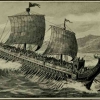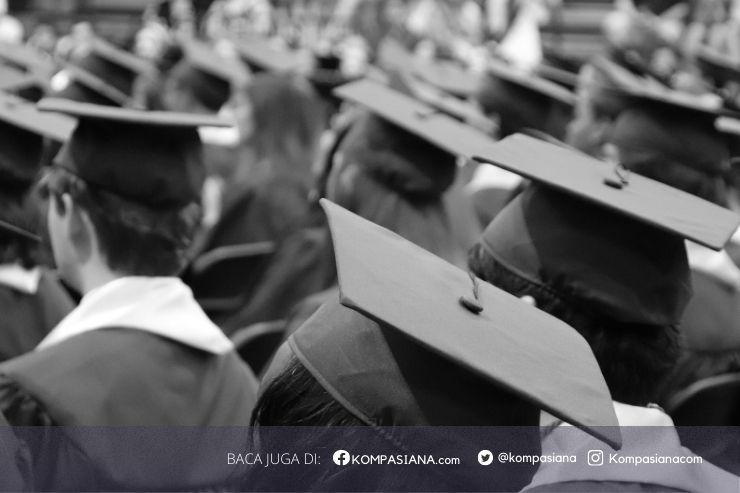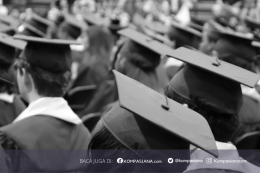Nur Fadilah (1222010125)
S1 Student Semester 6 Class D Islamic Education Management Major, Faculty of Tarbiyah and Teacher Training UIN Sunan Gunung Djati Bandung
According to Moedjiarto, a madrasah is said to be superior if it has superior input (students), has an effective learning climate, builds a positive learning atmosphere, has complete infrastructure, and maintains that graduates (output) remain superior. In line with this opinion, Sudarwan stated that the superior madrasah has several indicators, including having an evaluation and assessment of student learning achievements, developing learning according to student potential, creating a sense of comfort, security, and accommodating a learning environment effectively. Madrasah is said to be superior if it has a local content that is applied to students in the form of mandatory daily programs, life skills training held through extracurriculars, walking libraries, minimarkets that can help in terms of madrasah finances, and holding other supporting programs such as holding competitions, discussion groups, practice, writing, refreshing, and so on. The excellence criteria of a madrasah still has differences and similarities. The difference can be seen from the superior madrasah indicators that are focused on the planned system and programs such as holding supporting activities to help students in honing their talents and potential. While the similarity is that a superior madrasah is able to develop the potential of students by creating an effective, comfortable, safe learning atmosphere, and also preparing students to become excellent graduates who are ready to compete in the outside world. The superior program is intended to help students in developing their own abilities, thus bringing out the characteristics of each student. Thus, madrasah can be said to be superior if it has graduates who are produced from outstanding students both in non-academic and academic fields, competent teachers and educators, curriculum management that is in accordance with the potential of students, and the community as an external supporter that gives a positive image.
First, the Basic Concept of Global Education Reform
Education reform is a name given for the purpose of changing people's education. The meaning and method of education has changed through debate about what content or experience is produced by educated individuals or educated communities. Historically, the motivation for reform has not reflected the needs of the current community. "The theme of consistent reform includes the idea that large systematic changes to educational standards will produce social benefits in terms of health, wealth, and well-being of citizens. As part of a broader social and political process, the term educational reform refers to the chronology of significant and systematic revisions carried out to change the laws, standards, methodologies, and policies of education that affect a country's public school system to reflect the needs and values of contemporary society". In the 18th century, teaching classical education from private tutors at home, who were hired at family expense, was basically a privilege for children from wealthy families. Innovations such as encyclopedias, public libraries, and grammar schools all aim to alleviate some of the financial burden associated with the cost of the classical education model. Motivation in the Victorian era emphasized the importance of self-improvement. Victorian education focused on teaching topics of commercial value, such as modern languages and mathematics, rather than classical liberal arts subjects, such as Latin, art, and history. The motivation for education reformers such as Horace Mann and his supporters focuses on efforts to make schools more accessible and develop a strong and state-supported public school system. John Dewey, an early 20th century reformer, focused on improving society by advocating a curriculum based on scientific, pragmatic, or democratic principles. Meanwhile, Maria Montessori included a humanistic motivation to "meet the needs of children". In historic Prussia, the motivation to foster national unity led to formal education concentrated on teaching national language literacy to young children, which resulted in Kindergarten. The history of educational pedagogy in the United States ranges from teaching literacy and mastery of religious doctrine to building cultural literacy, assimilating immigrants into democratic societies, producing a skilled workforce for industrial workplaces, preparing students for a career, and competing in the world. global market." Educational inequality is also the motivation for educational reform to overcome community problems.
Second, National Education Reform in Indonesia
Educational reform is a complex process, with a complex face and has a very interactive network of themes, so that educational reform requires the deployment of all existing potentials and in a long time. How complex education reform can be understood because the required tempo is very long, much longer when compared to the tempo needed to carry out economic reform, especially compared to the tempo required for political reform. The reform seminar in East Germany held after the Berlin wall was torn down noted that it took six months for political reform, six years for economic reform, and for education reform it took sixty years. Even so, the results and products of each phase or certain period of education reform must be accountable. In addition, what is more important is that education reform must provide opportunities for anyone who is active in education to develop new steps that enable the improvement of the quality of education". Education reform basically has a goal so that education can run more effectively and efficiently achieve national education goals.
Third, Islamic Education Reform in Indonesia
Education reform 21 demands a different way of thinking and acting from what already exists by conducting a thorough diagnosis or a paradigm shift with a systemic approach. "Unless the systemic paradigm is comprehensive, it must also pay attention that fundamental changes in one aspect of education, will affect fundamental changes in other aspects. The change can be distinguished in four layers of interrelated systems. The first layer is a change in the learning experience, the second layer is the learning system that shows the implementation of the desired learning experience, such as in school. The third layer is a change in the learning system experience, and the fourth layer is a change in the legislative system that regulates and guarantees the overall progress of the education system nationally". Based on the nature of reform as citizen empowerment, the main attention should be given to changes in the first layer, namely learning experience, with consequences and implications on changes in the second to fourth layer. The first layer starting approach is also called the bottom-up approach (bottom-up approach). So far what has happened is a top-down approach (top-down approach), where the central government determines legislation and a series of implementation regulations that must be followed by the subordinates to the classroom or learning environment where students or citizens learn.
Fourth, Islamic Religious Education Reform Model Through Free Learning
The concept of independent learning is a concept that aims to provide a happy atmosphere for all parties involved in the world of education. The party in question is teachers, students, and parents of students. who argue that "the purpose of independent learning is to obtain a pleasant atmosphere for teachers, students, and parents. The educational process must create a happy atmosphere. The emergence of the concept of independent learning is driven by the desire of the Minister of Education and Culture to create a happy learning atmosphere without being burdened with the achievement of certain scores or grades". This happy atmosphere of the education process has the intention to produce quality students. Qualified learners are students who are not only good at memorizing but also students who have sharp analytical skills, reasoning and comprehensive understanding in learning to develop themselves". Merdeka belajar can be interpreted as an effort to apply the curriculum in the learning process to be fun and accompanied by the development of innovative ideas by teachers. Teacher's innovative ideas expressed in the form of positive actions in the learning process will have an impact on the growth of students' positive attitudes in responding to ongoing learning". Independence in the learning process can be achieved through independent learning. The concept of independent learning means exploring the potential of teachers and students in innovating and improving the quality of independent learning. What is meant by Mandiri is to really innovate in the field of education independently". The independence of teachers and students means that teachers and students are independent in learning. This independence is expected in the concept of independent learning.
This article is excerpted from the International Islamic Education Management Course Teaching Material Module by Prof. Rusdiana, M.M
Curriculum Vitae (CV)







